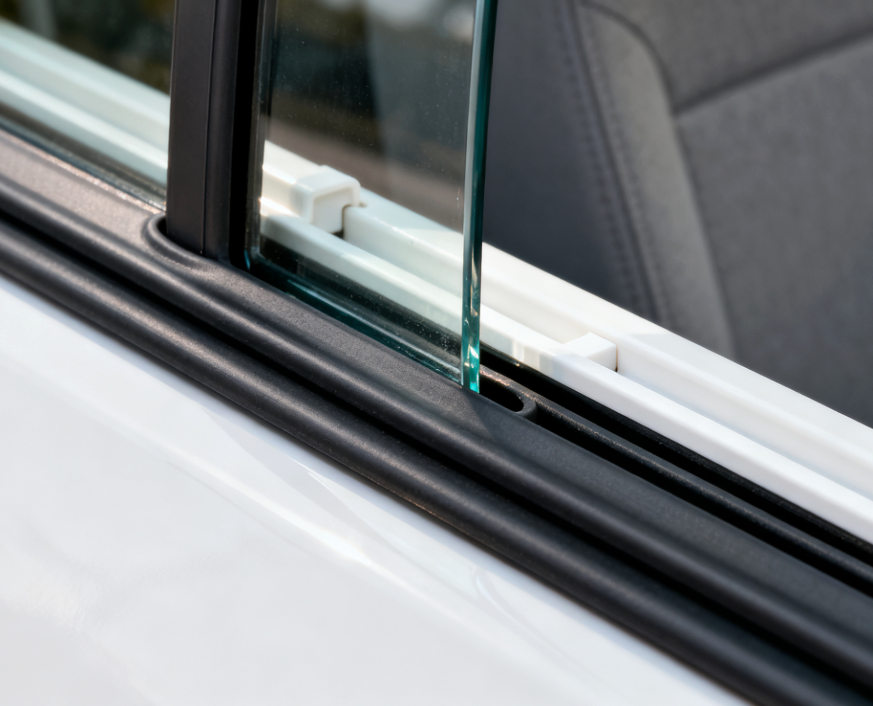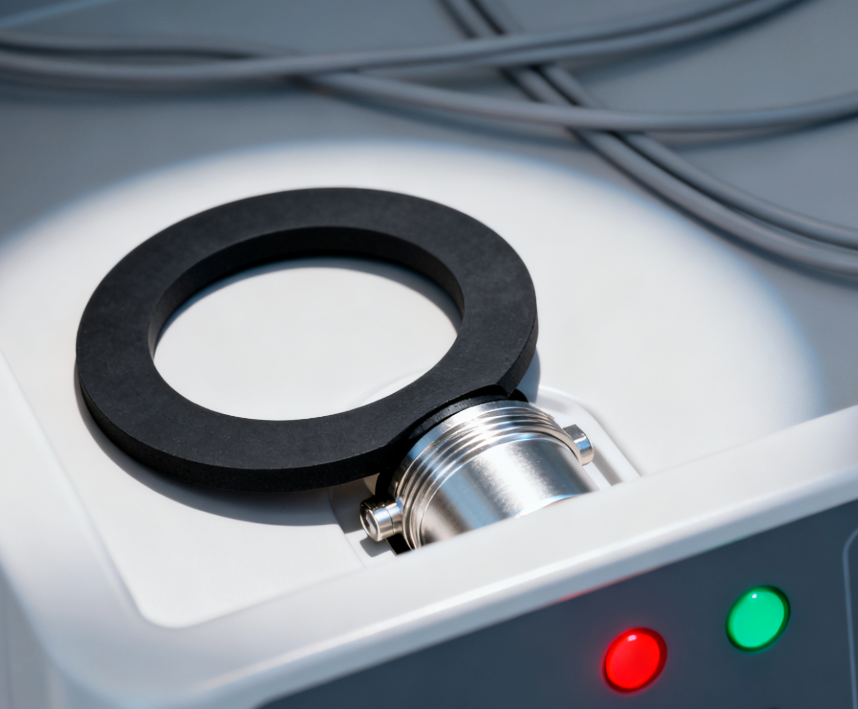Views: 0 Author: Site Editor Publish Time: 2025-10-14 Origin: Site









EPDM rubber sheets, or ethylene propylene diene monomer sheets, are more than just roofing materials. Known for their durability, flexibility, and resistance to UV, ozone, and extreme temperatures, EPDM has found applications across industries. From automotive seals to HVAC systems, industrial hoses, and medical equipment, this versatile elastomer provides long-lasting performance in both indoor and outdoor environments. In this article, we’ll explore 5 applications of EPDM rubber sheets beyond roofing and help you understand which type is best for each use.
EPDM rubber is a synthetic elastomer, meaning it is man-made rather than extracted from rubber trees. It combines ethylene, propylene, and diene monomers, giving it unique elasticity and durability. Unlike natural rubber, it resists UV rays, ozone, and weathering, making it perfect for outdoor and industrial use. We can stretch it, compress it, and it still retains shape over time.
| Feature | Natural Rubber | EPDM Rubber |
|---|---|---|
| Source | Latex from trees | Synthetic |
| UV Resistance | Low | High |
| Ozone Resistance | Low | High |
| Weather Durability | Moderate | Excellent |
| Chemical Resistance | Limited | Wide range (except oil/kerosene) |
EPDM sheets come in three main types, each suited for specific applications:
Solid EPDM Sheet
Strong, dense, highly durable
Retains tensile strength even under stress
Ideal for heavy-duty gaskets, seals, and industrial uses
Closed-Cell EPDM Sheet
Lightweight and slightly porous
Excellent compressibility
Highly moisture resistant (<5% absorption)
Often used in pond liners, HVAC seals, and outdoor insulation
Open-Cell EPDM Sheet
Soft and spongy due to air pockets
Extremely compressible
Not suitable for wet environments
Great for cushioning, thermal insulation, and low-pressure sealing
| Type | Density | Moisture Absorption | Best Use |
|---|---|---|---|
| Solid | High | Very low | Heavy-duty seals, industrial applications |
| Closed-cell | Medium | Low | Outdoor, wet or compressive applications |
| Open-cell | Low | High | Cushioning, insulation, dry sealing |
EPDM is popular because of its remarkable properties:
UV and Ozone Resistance – It stays strong even under prolonged sunlight exposure.
Extreme Temperature Endurance – Works from -40°C to +140°C without cracking or losing elasticity.
Water and Moisture Resistance – Closed-cell type is almost impermeable.
Chemical Resistance – Withstands anti-freeze, alcohols, acids; avoid oil or kerosene.
Electrical Insulation – Non-conductive, can protect lightly against electricity.
Flexibility and Durability – Can bend, stretch, or compress repeatedly without damage.
Quick Facts About EPDM:
Used in both indoor and outdoor applications.
Offers long lifespan, often decades in outdoor use.
Works in harsh conditions, including rain, snow, heat, or freezing.
EPDM rubber is much more than a roofing material. Thanks to its exceptional flexibility, chemical resistance, and durability, it finds use in many industrial and residential applications. Whether exposed to extreme temperatures, UV rays, or moisture, EPDM maintains its performance over time. Here are five key applications beyond roofing.
EPDM rubber sheets play a crucial role in the automotive industry, where durable seals and gaskets are essential. They are commonly used for:
Car door seals
Window gaskets
Trunk linings
These applications protect vehicles from rain, dust, wind, and road debris, while helping reduce noise and vibrations inside the cabin. Closed-cell EPDM is especially preferred because it prevents water penetration and provides long-lasting resilience even under constant pressure or repeated compression.
Benefits for automotive use:
High resistance to UV rays and ozone, ensuring long-term performance
Maintains elasticity across extreme temperatures
Absorbs vibrations and reduces wear on moving parts
| Feature | Advantage |
|---|---|
| Closed-cell EPDM | Superior water resistance |
| Flexible sheets | Easy to fit around doors, windows, and curves |
| Durable and strong | Long-lasting seals that withstand weather and friction |

EPDM sheets are widely used in HVAC systems, where they act as seals, gaskets, and vibration dampeners. Their flexibility allows them to fit snugly in ducts, vents, and other equipment. Unlike Nitrile or Neoprene gaskets, EPDM provides better resistance to weathering, UV, and temperature variations, making it highly reliable for both indoor and outdoor HVAC installations.
Key applications:
Gaskets in ductwork and air handling units
Vibration dampening for compressors, fans, and pumps
Insulation for vents and pipes
Advantages in HVAC:
Absorbs vibrations, reducing noise and equipment stress
Maintains shape and seal integrity even under temperature extremes
Resistant to moisture and environmental exposure, prolonging service life
EPDM sheets are an excellent choice for water containment projects. They are widely used in:
Artificial ponds and water gardens
Swimming pools and fountains
Water storage tanks
Closed-cell EPDM is preferred because it is waterproof, UV-resistant, and puncture-resistant. Its elasticity allows it to conform to uneven surfaces and sharp angles, creating a continuous barrier that prevents leaks and water loss.
| Application | EPDM Advantage |
|---|---|
| Pool liners | UV and chemical resistance prevent degradation over time |
| Pond liners | Flexibility conforms to natural terrain without tearing |
| Water tanks | Chemical and moisture resistance ensures durability |
These properties make EPDM ideal for outdoor water projects, particularly in environments exposed to direct sunlight, fluctuating temperatures, and heavy rainfall.
In industrial settings, EPDM is commonly used to manufacture hoses, pipes, and gaskets that transport liquids and gases. Its resistance to acids, alkalis, alcohols, and other chemicals ensures reliable performance under harsh conditions.
Applications include:
Industrial hoses for fluids and gases
Gaskets and seals in flanges and pipelines
Protective linings for corrosive chemical transport
Why EPDM works well:
Resistant to chemical corrosion and extreme temperature ranges
Durable under constant pressure and abrasion
Flexible, allowing for easy installation and bending without cracking
Closed-cell EPDM is ideal in these applications because its low moisture absorption ensures a tight seal, even in wet or high-pressure conditions.
EPDM sheets are also essential in pharmaceutical and medical applications, where hygiene and material stability are critical. They are used for:
Medical tubing and fluid transfer systems
Gaskets and seals in medical devices
Protective components in sterilizable equipment
Only FDA-approved EPDM should be used in medical applications to ensure biocompatibility. EPDM maintains its properties even after repeated sterilization, chemical exposure, and contact with fluids, making it a reliable choice for hospitals, laboratories, and medical device manufacturers.
Key advantages in healthcare:
Resistant to steam, heat, and sterilization processes
Non-reactive with chemicals and medicines
Maintains shape and flexibility over long-term use
EPDM rubber sheet proves to be one of the most versatile synthetic rubbers available. From automotive systems to medical devices, it performs reliably where other elastomers might fail. Its combination of durability, chemical resistance, moisture protection, and UV endurance makes it indispensable in industries beyond roofing.

Choosing the right type of EPDM rubber sheet can make a huge difference in performance. Not all projects require the same material, and understanding open cell, closed cell, and solid EPDM is essential. Each type has unique properties that make it better suited for certain applications.
EPDM sheets vary mainly in density, compressibility, moisture absorption, and resilience. Understanding these differences helps you select the right material.
| Property | Solid EPDM | Closed Cell EPDM | Open Cell EPDM |
|---|---|---|---|
| Density | High | Medium | Low |
| Compressibility | Low | Moderate | High |
| Moisture Absorption | <5% | <5% | High |
| Resilience | Very high | High | Moderate |
| Best Use | Heavy-duty seals, gaskets | Water-resistant seals, insulation | Cushioning, thermal/electrical insulation |
Solid EPDM is dense, extremely durable, and resists abrasion. It works well for applications that require high tensile strength and long-term exposure to pressure Closed-cell EPDM is lighter, compressible, and almost impermeable to water. It is ideal for outdoor weatherstripping, pond liners, and sealing systems where moisture resistance is crucial. Open-cell EPDM has a soft, spongy structure that compresses easily. It works best in applications needing thermal or electrical insulation or gentle cushioning, but it absorbs moisture quickly, limiting its use outdoors.
Solid EPDM: Heavy-duty industrial gaskets, automotive seals, high-pressure sealing applications.
Closed-cell EPDM: HVAC gaskets, pond liners, weatherstrips, water-resistant seals.
Open-cell EPDM: Electrical insulation, thermal padding, cushioning, non-wet indoor seals.
This variety ensures EPDM can adapt to different non-roofing projects efficiently, depending on your need for flexibility, moisture resistance, or strength.
Identify Environmental Exposure – Use closed-cell or solid EPDM for outdoor projects exposed to UV, ozone, or moisture.
Check Compression Requirements – Open-cell EPDM is ideal when high compressibility is needed, while solid handles heavy-duty pressure.
Consider Moisture Contact – Avoid open-cell EPDM in wet or high-humidity applications.
Evaluate Durability Needs – Solid EPDM lasts longest under mechanical stress, abrasion, and chemical exposure.
Match Flexibility and Fit – Closed-cell EPDM wraps around irregular surfaces easily without losing water resistance.
Selecting the right EPDM type ensures your seals, gaskets, liners, or insulation perform reliably over time, even under demanding conditions.
Yes, EPDM sheets can often be reused if they are not damaged. Solid EPDM retains its shape and strength over multiple uses, while closed-cell EPDM can be reused in water-resistant or cushioning applications. Open-cell EPDM is less suitable for repeated use, especially in wet environments.
Solid EPDM: Dense, highly durable, resists abrasion, ideal for heavy-duty gaskets and seals.
Closed-Cell EPDM: Slightly porous, compressible, moisture-resistant, perfect for weatherstripping, pond liners, and insulation.
Open-Cell EPDM: Soft and spongy, highly compressible, absorbs moisture easily, best for thermal or electrical insulation.
Yes, EPDM performs well under a wide temperature range. It can withstand -40°C to +140°C (-40°F to 284°F) without losing flexibility, shape, or functionality, making it ideal for both cold and hot environments.
Yes, EPDM is resistant to anti-freeze, alcohols, acids, and bases, which makes it suitable for many chemical processing applications. However, it is not compatible with oils or kerosene, so those environments require alternative rubber types.
EPDM is highly durable outdoors due to its UV, ozone, and weather resistance. Depending on exposure conditions, it can last 10 to 30 years without significant degradation, maintaining flexibility and strength over time.
EPDM rubber sheets are truly multi-purpose materials, offering solutions for sealing, insulation, water containment, and industrial applications. Whether you need solid, closed-cell, or open-cell EPDM, selecting the right type ensures your project performs safely and efficiently. For businesses and professionals looking for high-quality EPDM products, Qingdao Hwation Rubber Co., Ltd. offers premium sheets, expert guidance, and customized solutions to meet all industrial and commercial needs.
